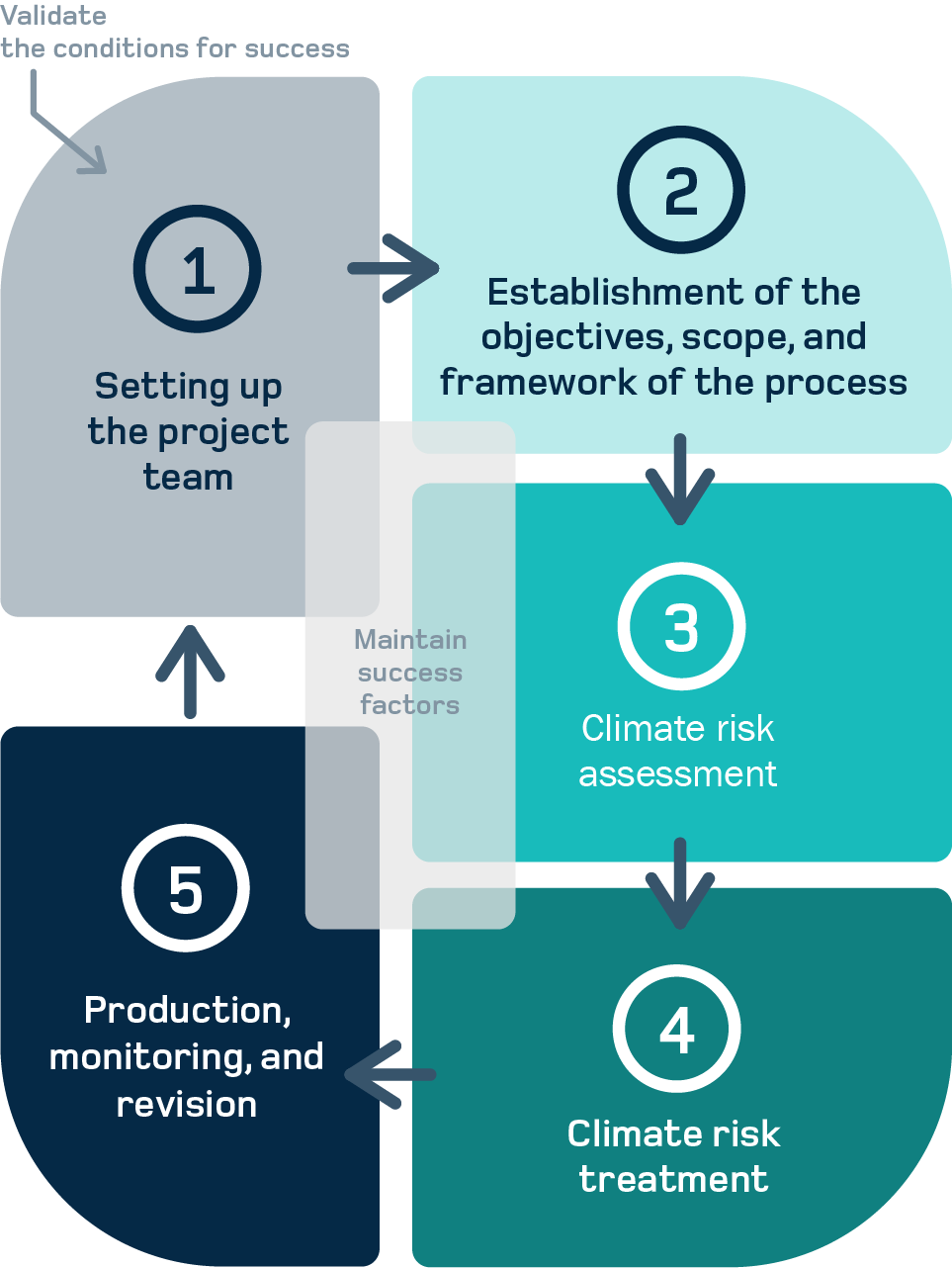Understanding Adaptation Science
The adaptation process is a continuous, iterative process that has to keep pace with changing risks and new learnings. The aim is to reduce the risks associated with climate change. An adaptation process can result in the drafting of an adaptation plan and the implementation of concrete solutions that are suited to the situation, for example.
The adaptation process requires a holistic, integrated understanding of the issues, which are numerous and potentially interrelated. Take the case of a body of water whose dropping levels can affect several sectors, such as transport, energy and agriculture.
A transversal, structured approach to the issues will support the development of adaptation strategies benefiting all of the concerned sectors. This type of approach facilitates climate change adaptation planning, ensuring that adaptation goals are met while optimizing the investment of financial, material and human resources and avoiding amplifying the impacts of climate change.
Steps in the adaptation process
The adaptation process consists of several steps that can be presented in different ways. The process shown below has five main steps, preceded by the conditions that are essential to its success.
This approach is based on the guide Climate change adaptation planning - A guide for municipal bodies.
The conditions for success
For an adaptation process to be effective:
The governance of the process must allow organizations to adapt proactively by taking on several roles in adapting to climate change.
The adaptation process should be coordinated with other related processes to ensure consistency and efficiency.
The principle of equity must be integrated into the adaptation approach and be applied throughout the process.
Getting all relevant parties involved enables the inclusion of a variety of transversal issues throughout the process.
The availability of financial, human and material resources influences the actions that can be taken.
Step 1 is to identify the parties responsible for leading the adaptation process that will culminate in an adaptation plan. During this stage, experts who can provide support are identified.
Step 2 is essential to define the objectives of the plan, the scope of the actions and the profile of the area or organization. This includes the systems and the hazards to be considered in the various analyses, the climate data and the risk analysis scales.
In Step 3, current and future climate risks are identified and ranked in order to prioritize the adaptation measures to be taken.
Step 4 is to identify adaptation measures that will help manage the risks. At this stage, a timetable for the implementation of the measures, the required resources, and the indicators to monitor should be established.
Step 5 is to produce and disseminate the adaptation plan, and to monitor and evaluate the measures in order to assess their effectiveness. At this stage, the measures will be adjusted if necessary, and the plan may be revised.

Figure 1: The stages in the adaptation process
Avoiding Maladaptation
Regardless what kind of approach is advocated for planning adaptation solutions, implementing certain measures can lead to maladaptation, meaning problems may be aggravated rather than mitigated. For example, to adapt to increasing coastal hazards, installing riprap or a protective wall on a coastal property may in certain cases exacerbate erosion on adjacent lots.
To avoid maladaptation, certain factors may be taken into consideration when selecting an adaptation measure. For example, the measure might be able to generate environmental, social or economic co-benefits and help mitigate multiple risks simultaneously. When these factors are taken into account, maladaptation can be avoided, even in a context of uncertainty in climate projections.
Photo opposite: When waves pound a retaining wall or riprap, their energy is redirected to the structure’s extremities, which can accelerate erosion of the adjacent shoreline. This is referred to as the flanking effect. Source: Ministère de la sécurité publique du Québec
The Ministère de l’Environnement, de la Lutte contre les changements climatiques, de la Faune et des Parcs partnered with Ouranos to produce the guide, Climate change adaptation planning - A guide for municipal bodies.
The guide aims to facilitate the development of the adaptation component of Quebec's municipalities climate plans.